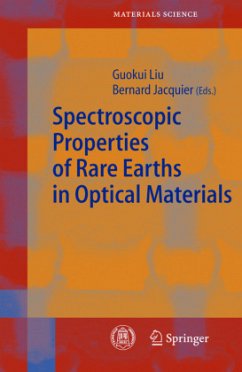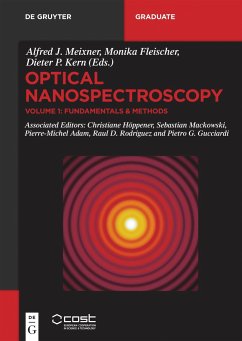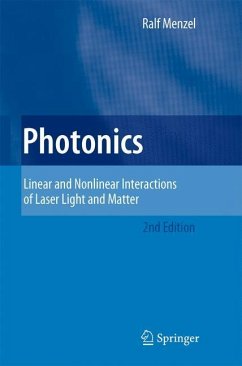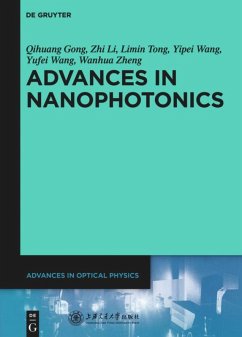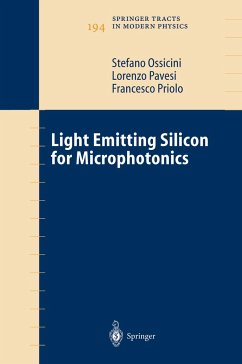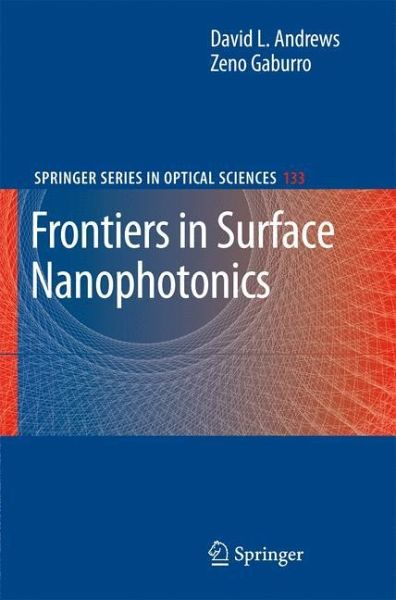
Frontiers in Surface Nanophotonics
Principles and Applications
Herausgegeben: Andrews, David L.; Gaburro, Zeno
Versandkostenfrei!
Versandfertig in 6-10 Tagen
76,99 €
inkl. MwSt.

PAYBACK Punkte
38 °P sammeln!
The book emphasizes the role of surface effects in optical phenomena in nanoscience from two different perspectives. When systems are reduced in volume, the surface versus volume ratio increases: this translates, at the level of single nanostructures, into enhanced role of interfacial chemistry and thermodynamics, and, at the level of systems of nanostructures, into larger density on interfaces, which in turn leads to intriguing collective effects, such as plasmonics or multiple reflection and refraction phenomena. The book aims to highlight both perspectives presenting sample applications, with no claim of being exhaustive, but rather attempting to stimulate the reader in this potentially rewarding field.
With the rapid technical advancement of nanoscale fabrication, the science of optics has recently undergone a renaissance with the characterization of new and distinctive kinds of photonic interaction. Beyond the well-known plasmonic processes, many of these effects also arise from intricate local field effects associated with surfaces, where the surface morphology determines the detailed electromagnetic behavior. As such interactions move into practical device applications across the globe, this book presents an overview of some cutting edge developments, contributed by members of several highly renowned research groups. Copiously illustrated and with extensive references to original literature, Frontiers in Surface Nanophotonics will appeal to a wide readership with interests in optics, materials science and nanotechnology.



